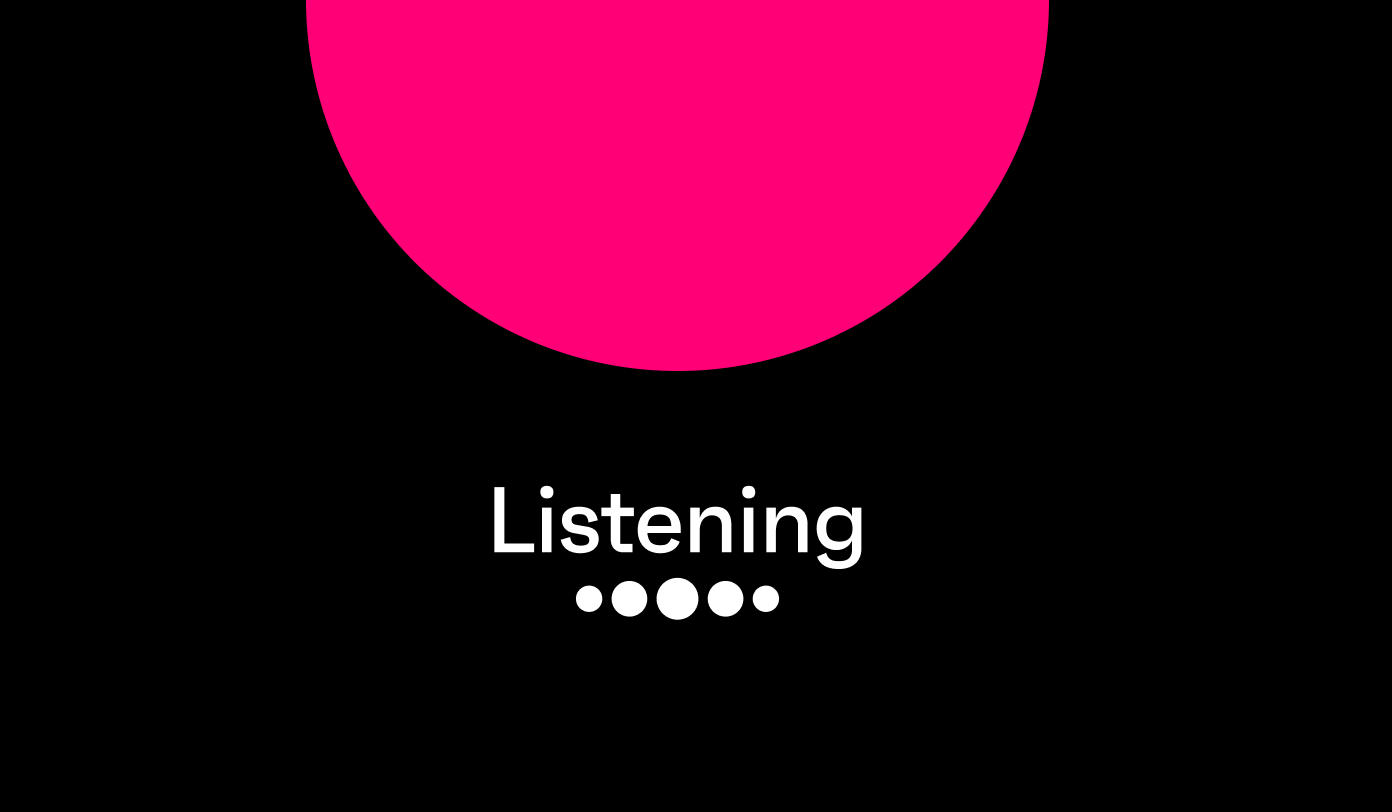“Social media is not a broadcast platform, it’s a place where communities form and thrive, and brands can build genuine human connections with customers,” said Tamara Littleton from The Social Element. Tamara’s right, social is a big way brands can connect with consumers today. But it can be tricky to stand out when so many ads fill our social feeds.
We’re going to zero in on how you can optimize your brand’s social media presence to inspire and engage your target audience, looking at things like:
- How much social media’s influence is growing
- Who spends the most time on social media
- How consumers use social media for product research
- What different social media platform users want from content
- What each generation wants brands to be on social media
- Must-knows when using social media advertising
Ads on social media are growing in influence
A staggering 94% of consumers engage with some sort of social platform at least monthly – a sign of the huge opportunities present for brands in this space. The average consumer also spends 37% of their time online on social media, making it a good place to reach a large audience of people.
On top of this, more are turning to social media to find products – the number who find out about new brands and products through social media advertising has grown 9% since Q1 2020. It was only being beaten by ads on music streaming services by one percentage point.

Over time digital advertising has increased, but effectiveness of certain traditional advertising has declined. The number finding out about new brands and products through ads at the cinema, and ads in magazines and newspapers has fallen 15% and 12% respectively since Q1 2020.
Even though traditional ads have worked in the past, and in many cases still do, brands shouldn’t overlook the importance of social media for reaching and engaging audiences. With the high level of consumer engagement and increasing use of social for product discovery, using social media marketing effectively is a must-have for any brand looking to stay ahead – especially in this tough economy.
Gen Z spends the most time on social media, with millennials not far behind
Pretty much every Gen Z consumer uses social media in some way, with an average of 2 hours and 51 minutes spent on social each day. Millennials aren’t far behind either, clocking in at 2 hours and 34 minutes.
Social media isn’t just about following friends, family, or even influencers anymore.
For almost 3 in 10 Gen Z, social media is about finding inspiration for things.
More want to be inspired, rather than simply informed, and social fits the bill just nicely.
Gen Z are even going to TikTok before Google for information about anything from finances, travel, or beauty trends. According to research by Google itself, nearly half of young people look to TikTok or Instagram instead of Google Maps or Search for answers. It’s a big shift in behavior, and something brands should be mindful of when planning their social ad campaigns.
More consumers are using social media for product research
Search engines (50%) and social media (45%) are battling it out to nab first place for product research, with the gap between the two closing over time.
For Gen Z, social networks have already overtaken search engines.
50% go to them for product research compared to 45% for search. Millennials aren’t far behind either.
Latin America, and the Middle East & Africa are also key regions to consider. Consumers here are most likely to say they find out about new products and brands through social media ads, at 37% and 38% respectively.
It’s a sign that the way we search for products is changing. Since Q3 2018, “finding new ideas or inspiration” has jumped from 9th place to 6th place in our reasons for using the internet, overtaking product research in the process. It’s a shift toward consumers allowing product discovery to happen more organically online, rather than actively seeking out information.
For brands, this means it’s important to keep up with what’s culturally important to their potential customers, and what questions they’re asking.
Among Gen Z there’s been a 7% drop since Q1 2021 in the number who say they trust what online reviews say about products and services. This might mean that user-generated content is likely to be popular with this group. The benefit of UGC is that consumers can see real people interacting with the products, which is likely to build more trust in the brand.
American shapewear and clothing company Skims is a good example of this. They post videos of real people showcasing their purchases on their TikTok channel, which is a way of showing off their clothes on real bodies and therefore helping the brand to build trust among their customers.
The key takeaway: social media is becoming as important (if not more in some cases) as search engines for product research. And it’s unlikely that we’ll reverse the direction we’re headed, especially as newer generations take more control of the narrative.
Tailoring social ads to platform and audience preferences is a must
Brands should be aware of their audience on each social platform, as favorite platforms differ by generation. Instagram ranks pretty high for all generations in terms of their favorite. But, as you may have guessed, TikTok is particularly popular among younger consumers.

The types of paid ads used is also key – users of different platforms crave different types of content. Many platforms have similar features, but people open each app with a specific experience in mind.
For TikTok and Instagram users, being funny is key. While X (formerly Twitter) users are looking for the hottest take – they want to see informative content when they log on to the app.
It’s something for brands to consider when choosing what platforms to use in their social media strategy, but also what kind of messages they should share on them.
San Diego Zoo’s TikTok account veers down the entertaining route, sharing funny videos of animals at the zoo. It’s clearly been a hit too, gaining them 2.3 million followers.
Airline group Ryanair has also dipped its toe in comedy, sharing entertaining videos on their TikTok account. The brand initially shot to TikTok fame using the app’s native green screen filter on their planes, and has ridden the wave ever since.
They’re completely different organizations. But it shows how humor can be used in various ways to engage audiences.
Overall, brands need to remember that social media platforms attract different generations and users, and that means they require different types of content to resonate with their audience. Understanding the preferences, and behaviors of their target audience on each platform is important so content can be tailored accordingly.
Generations differ in what they want from ads
Every generation will have their own preferences when it comes to social media ads, so it’s something to bear in mind when thinking about your digital marketing campaign.

Younger generations are more likely to want brands to have a youthful vibe, but getting this right isn’t necessarily easy. As we mentioned before, keeping up to date with what’s culturally important to your target audience will help here.
If older generations are your target audience instead, they stand out for wanting brands to be reliable, traditional, and authentic. This may mean they resonate more with ads which are informative and transparent. It’s important that the messaging in your campaign mirrors what your target audience wants the brand to be.
Brands, take note: think about your audience before the themes in your social media campaign.
Be aware of getting too personal
Over 6 in 10 consumers find personalized product recommendations extremely helpful. But at the same time just over half think ads targeted towards them are intrusive. It’s clearly a fine line to tread, and the answer lies in what kinds of paid ads are personalized.
While around a third find personalized ads for clothing and shoes useful, they’re much less inclined to feel the same way about housing and utilities (9%).
It’s possible that people feel personalized housing and utilities ads are unnecessary. By nature, these purchases are more functional and people are less likely to switch providers as often. So, it’s important to be mindful of your product before considering personalized ads.
Another thing to be aware of is retargeting. Setting frequency caps is a good way to avoid overwhelming consumers with ads. It’s also smart to choose the right social media channel for your digital marketing campaign and stick to it. If people see the same ads everywhere, they may start to have concerns about privacy.
Overall, personalized ads are useful to many. But as with lots of things in this area, a blanket strategy won’t work here – consider the nature of your product before using this as an approach.
Watch-outs when advertising on social media
Social media is pretty fickle and the game is always changing.
Influencers have long been used to help get products in front of people in a way that appears authentic, but with the rise of de-influencing on social media, the tide can quickly turn.
Consumers once followed influencers for real brand and product recommendations, but as time has passed, many have lost their authenticity and some have been criticized for trying to sell products they clearly don’t use. Others have also received complaints for not disclosing paid social media ads. It puts consumers in a tough situation, not knowing who or what to trust.
For brands, the takeaway here is that it’s important to make sure values and content are aligned when working with any influencer or content creator. That way, ads still appear genuine and are more likely to gain the trust of consumers.
Algorithm changes are another thing to keep track of, Instagram updated its algorithm in July 2022 so that each part of the app (Feed, Explore, and Reels) uses a different algorithm.
Changes to algorithms means that creators are finding it harder to appear on top of feeds, and it’s something that brands will have to navigate too. Ultimately, it’s important for brands to stay on top of changes, and be ready to pivot if needed.
Overall takeaway
Social media advertising is increasingly a must-have tool for any brand looking to meet consumers where they’re at, but a “one-size-fits-all” approach won’t fly here.
Brands should bear in mind their target audience, platform, and the type of content they’re sharing, and be ready to pivot as trends and cultural attitudes change.
The ultimate social media report 2023
Get your copy





.webp?width=495&height=317&name=pink_thumb_graphs%20(1).webp)
.webp?width=495&height=317&name=pink_thumb_letter%20(2).webp)
